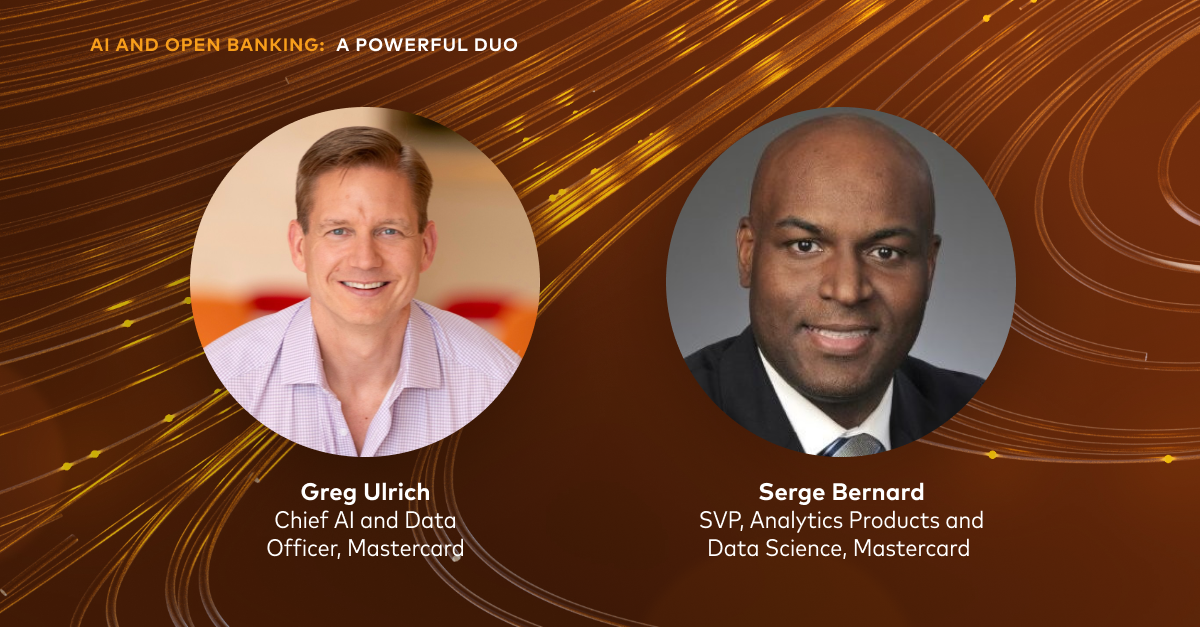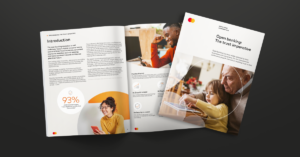In the ever-evolving landscape of financial services, two elements have emerged as game-changers: AI and open banking. These technologies form a powerful duo that is transforming the way in which people can share, manage, and leverage their financial data in a secure and valuable manner.
AI has the potential to make financial services smarter, more personalized and more powerful, while open banking drives transparency and innovation. Together, they create a synergy that not only enhances the quality and efficacy of financial services but also provides direct, tangible benefits to both businesses and consumers.
We sat down with two of Mastercard’s AI experts, Greg Ulrich, Chief AI and Data Officer, and Serge Bernard, SVP, Analytics Products and Data Science, Open Banking, to discuss how AI and open banking combined transforms the way we think about financial services.
Get yourself a coffee, settle in, and let’s see what they shared.
Let’s look at the use cases
AI isn’t new – and at Mastercard, we’ve been harnessing this technology for years. When we integrate AI in open banking, we can truly ensure the safe and secure exchange of data for a consumer’s own benefit, Greg Ulrich explains:
“AI allows us to extract more insights out of the data. We have developed several AI models to identify and extract relevant information from relevant fields in a bank transaction data, which allow us to classify each transaction,” he says and continues:

“Categorization is one of our foundational capabilities. It helps us and our partners build innovative products such as Personal Finance Management (PFM) and Business Financial Management (BFM). It feeds the downstream AI models that power our Payment and Lending solutions like Payment Success Indicators (PSI) and Verification of Income (VOI).”
Enhancing financial inclusion
AI offers numerous opportunities for open banking, and a crucial aspect is how it makes lending more inclusive.
“Traditional credit bureaus do not provide a complete picture of a consumer’s financial health, and credit scores often exclude relevant information such as income and cashflows,” says Serge Benard and emphasizes:
“People with stable incomes and high cash balances but no credit history are often rejected, and the majority of small businesses struggle to get access to capital they need to grow.”
According to him, AI and open banking combined can open the door for so many consumers and business owners who would otherwise have limited options if they rely on traditional lending models only.
“With AI and open banking technology, we’re enabling our partners to analyze consumer data such as payment history – for instance rent, bills, cashflow – and efficiently assess their creditworthiness for a loan – independent of a credit score,” Serge Benard says.
Trust is our business
The possibilities of AI are endless, but the only AI is responsible AI. At Mastercard, we take a principled approach, ensuring the AI we use is ethical, transparent and beneficial to customers and end users so that everyone can thrive.
“We understand permissioned data is the lifeblood of our business, and managing it safely and securely in ways that are ethical and compliant is key,” Greg Ulrich explains and emphasizes:
“We have decades of experience in AI, and it is embedded in a lot of our products and services. All our AI models go through rigorous AI and Model governance to ensure as unbiased a process as possible,” he ends.

Want to explore how bunq, one of the largest neobanks in Europe, combined Mastercard’s open banking capabilities with AI to create an innovative money assistant that gives users answers to questions about their financial habits? Read our customer case study or visit our European home for everything open banking.
You can also explore Mastercard’s data responsibility principles or visit our AI newsroom for more insights on how AI is transforming the financial industry.




